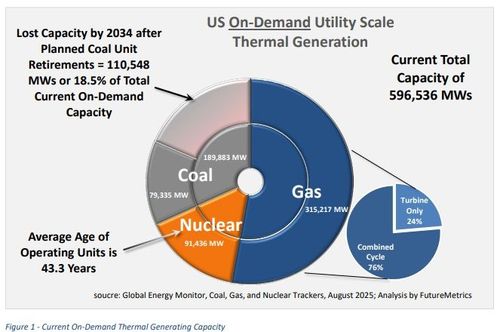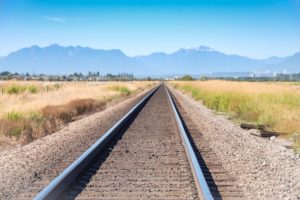 To better compete with Canada’s transcontinental railroads, efficiencies within the trucking industry, and to capitalize on a more relaxed regulatory environment, the railroad industry is entering into a consolidation phase with the major operators all reportedly in play. On the heels of the 2023 merger between Canadian Pacific and Kansas City Southern which connected Canada, the US and Mexico with the first single-line railway, Union Pacific and Norfolk Southern are pursuing a merger that would create the first coast-to-coast railway system in the US. The tie-up between Norfolk Southern and Union Pacific raised the possibility of further consolidation in the industry with investors eyeing a merger between CSX and BNSF, or with CPKC. While mergers might satisfy shareholders and activist investors, industry insiders see the trend creating more inefficiencies. …Freight Rail Customer Alliance is opposed to further consolidation given that past mergers have resulted in higher transportation costs and unreliable service for customers.
To better compete with Canada’s transcontinental railroads, efficiencies within the trucking industry, and to capitalize on a more relaxed regulatory environment, the railroad industry is entering into a consolidation phase with the major operators all reportedly in play. On the heels of the 2023 merger between Canadian Pacific and Kansas City Southern which connected Canada, the US and Mexico with the first single-line railway, Union Pacific and Norfolk Southern are pursuing a merger that would create the first coast-to-coast railway system in the US. The tie-up between Norfolk Southern and Union Pacific raised the possibility of further consolidation in the industry with investors eyeing a merger between CSX and BNSF, or with CPKC. While mergers might satisfy shareholders and activist investors, industry insiders see the trend creating more inefficiencies. …Freight Rail Customer Alliance is opposed to further consolidation given that past mergers have resulted in higher transportation costs and unreliable service for customers.
In related coverage:


 BC’s forestry sector is awaiting the results of a US Commerce Department investigation into the imports of wood products, which could impose further tariffs on the beleaguered industry. It comes months after US President Trump launched a Section 232 investigation into whether importing timber, lumber and derivative products could pose a national security threat to the US. …”Lumber is just one of many sectors that could get impacted … maybe lumber gets a lower tariff, but plywood and OSB and pulp get a higher tariff. We don’t know,” said Russ Taylor. …Taylor says that, while the Section 232 tariffs could cause further mill curtailments in BC, the U.S. forestry industry doesn’t yet have the capacity to fill the void. …”And the US mills will be very happy to raise their price … at a discount to the Canadian price because that’s just free money in the short term for them,” he added.
BC’s forestry sector is awaiting the results of a US Commerce Department investigation into the imports of wood products, which could impose further tariffs on the beleaguered industry. It comes months after US President Trump launched a Section 232 investigation into whether importing timber, lumber and derivative products could pose a national security threat to the US. …”Lumber is just one of many sectors that could get impacted … maybe lumber gets a lower tariff, but plywood and OSB and pulp get a higher tariff. We don’t know,” said Russ Taylor. …Taylor says that, while the Section 232 tariffs could cause further mill curtailments in BC, the U.S. forestry industry doesn’t yet have the capacity to fill the void. …”And the US mills will be very happy to raise their price … at a discount to the Canadian price because that’s just free money in the short term for them,” he added. 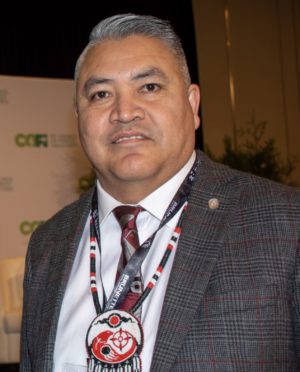
 JAFFRAY, BC — The BC Labour Relations Board has dismissed an application from unionized employees with Galloway Lumber Company seeking a court order against the employer in a labour dispute over a negotiated severance agreement due to the permanent closure of the Galloway sawmill, near Jaffray. While the labour board dismissed the application on Aug. 14, vice-chair Carmen Hamilton deferred the matter to the parties’ negotiated dispute resolution process. Meanwhile, both sides are have agreed to bring the matter before an arbitrator who is not available until January 2026. “At its heart, this matter is a contract interpretation dispute,” wrote Hamilton. The United Steelworkers Local L-405 is seeking roughly $1.2 million in severance that was negotiated as part of an adjustment plan that was negotiated following the closure of the mill.
JAFFRAY, BC — The BC Labour Relations Board has dismissed an application from unionized employees with Galloway Lumber Company seeking a court order against the employer in a labour dispute over a negotiated severance agreement due to the permanent closure of the Galloway sawmill, near Jaffray. While the labour board dismissed the application on Aug. 14, vice-chair Carmen Hamilton deferred the matter to the parties’ negotiated dispute resolution process. Meanwhile, both sides are have agreed to bring the matter before an arbitrator who is not available until January 2026. “At its heart, this matter is a contract interpretation dispute,” wrote Hamilton. The United Steelworkers Local L-405 is seeking roughly $1.2 million in severance that was negotiated as part of an adjustment plan that was negotiated following the closure of the mill.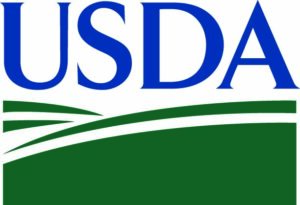 WASHINGTON – US Secretary of Agriculture Brooke Rollins announced the USDA has taken the next step in the rulemaking process for rescinding the 2001 Roadless Rule by opening a public comment period. …The USDA Forest Service is publishing a notice seeking public comment on its intention to develop an environmental impact statement for the proposed rescission of the rule. The notice details the reasons for rescinding the rule, the potential effects on people and resources, and how national forests and grasslands are managed. The USDA will publish the notice August 29, 2025. …While the rescission would apply to roadless areas in Alaska, state-specific rules for Colorado and Idaho would not be affected by the proposal. In total, the 2025 rescission would apply to nearly 45 million acres of the nearly 60 million acres of inventoried roadless areas within the National Forest System. …The public is invited to comment no later than Sept. 19, 2025.
WASHINGTON – US Secretary of Agriculture Brooke Rollins announced the USDA has taken the next step in the rulemaking process for rescinding the 2001 Roadless Rule by opening a public comment period. …The USDA Forest Service is publishing a notice seeking public comment on its intention to develop an environmental impact statement for the proposed rescission of the rule. The notice details the reasons for rescinding the rule, the potential effects on people and resources, and how national forests and grasslands are managed. The USDA will publish the notice August 29, 2025. …While the rescission would apply to roadless areas in Alaska, state-specific rules for Colorado and Idaho would not be affected by the proposal. In total, the 2025 rescission would apply to nearly 45 million acres of the nearly 60 million acres of inventoried roadless areas within the National Forest System. …The public is invited to comment no later than Sept. 19, 2025. 
 We welcome the recent announcement from the White House regarding the US–EU Framework Agreement on Reciprocal, Fair, and Balanced Trade. Notably, the European Union has committed to addressing U.S. concerns about the EUDR, acknowledging that US commodity production poses negligible risk to global deforestation. This recognition is a positive step toward ensuring Southern Pine lumber producers and exporters are not unfairly burdened by regulations that fail to account for the sustainability and stewardship practices already in place within the American forestry sector. …The EUDR’s stringent traceability requirements (such as geolocation data for every plot of land from which timber is sourced) present serious compliance obstacles for U.S. producers. …Recognizing the broad impact of the EUDR across multiple agricultural sectors, the forest products industry is strategically voicing its objections through official trade and commerce channels.
We welcome the recent announcement from the White House regarding the US–EU Framework Agreement on Reciprocal, Fair, and Balanced Trade. Notably, the European Union has committed to addressing U.S. concerns about the EUDR, acknowledging that US commodity production poses negligible risk to global deforestation. This recognition is a positive step toward ensuring Southern Pine lumber producers and exporters are not unfairly burdened by regulations that fail to account for the sustainability and stewardship practices already in place within the American forestry sector. …The EUDR’s stringent traceability requirements (such as geolocation data for every plot of land from which timber is sourced) present serious compliance obstacles for U.S. producers. …Recognizing the broad impact of the EUDR across multiple agricultural sectors, the forest products industry is strategically voicing its objections through official trade and commerce channels. President Donald Trump on Friday announced he’s directing his administration to investigate imports of furniture into the United States that will lead to higher tariffs by October. “Within the next 50 days, that Investigation will be completed, and Furniture coming from other Countries into the United States will be Tariffed at a Rate yet to be determined,” Trump wrote. “This will bring the Furniture Business back to North Carolina, South Carolina, Michigan, and States all across the Union,” Trump said. …Already, furniture prices have been increasing over the past few months as Trump hiked tariffs on countries including China and Vietnam, the top two sources of imported furniture. Both countries imported $12 billion worth of furniture and fixtures last year, according to US Commerce Department data. …Furniture stocks, such as Wayfair, William-Sonoma and Restoration Hardware, all tanked in after-hours trading Friday.
President Donald Trump on Friday announced he’s directing his administration to investigate imports of furniture into the United States that will lead to higher tariffs by October. “Within the next 50 days, that Investigation will be completed, and Furniture coming from other Countries into the United States will be Tariffed at a Rate yet to be determined,” Trump wrote. “This will bring the Furniture Business back to North Carolina, South Carolina, Michigan, and States all across the Union,” Trump said. …Already, furniture prices have been increasing over the past few months as Trump hiked tariffs on countries including China and Vietnam, the top two sources of imported furniture. Both countries imported $12 billion worth of furniture and fixtures last year, according to US Commerce Department data. …Furniture stocks, such as Wayfair, William-Sonoma and Restoration Hardware, all tanked in after-hours trading Friday.
 The US International Trade Commission determined on August 21 that revoking the existing antidumping duty order and countervailing duty order on wooden cabinets and vanities from China would likely lead to “continuation or recurrence of material injury within a reasonably foreseeable time.” The Kitchen Cabinet Manufacturers Association (KCMA) said that ruling “means that the antidumping and countervailing duty orders will remain in place for at least another five years and continue to provide relief to the US domestic industry from dumped and subsidized merchandise from China.” As a result of the Commission’s affirmative determinations, the existing orders on imports of these products will remain in place. …The action comes under the five-year (sunset) review process required by the Uruguay Round Agreements Act. The Commission’s public report on Wooden Cabinets and Vanities from China will be available by October 3, 2025.
The US International Trade Commission determined on August 21 that revoking the existing antidumping duty order and countervailing duty order on wooden cabinets and vanities from China would likely lead to “continuation or recurrence of material injury within a reasonably foreseeable time.” The Kitchen Cabinet Manufacturers Association (KCMA) said that ruling “means that the antidumping and countervailing duty orders will remain in place for at least another five years and continue to provide relief to the US domestic industry from dumped and subsidized merchandise from China.” As a result of the Commission’s affirmative determinations, the existing orders on imports of these products will remain in place. …The action comes under the five-year (sunset) review process required by the Uruguay Round Agreements Act. The Commission’s public report on Wooden Cabinets and Vanities from China will be available by October 3, 2025.

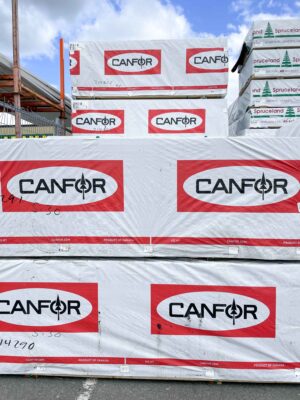 DARLINGTON COUNTY, South Carolina — Monday marked the last day of operation at the Canfor sawmill in Darlington. The mill announced its closure
DARLINGTON COUNTY, South Carolina — Monday marked the last day of operation at the Canfor sawmill in Darlington. The mill announced its closure  NEW ZEALAND — The timber industry is battening down the hatches, as it struggles with low demand, increased running costs, and wars and tariffs overseas.
NEW ZEALAND — The timber industry is battening down the hatches, as it struggles with low demand, increased running costs, and wars and tariffs overseas. 


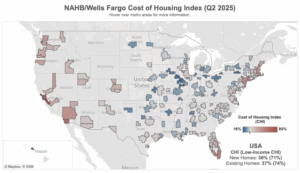 While new homes remain largely unaffordable, builder efforts to improve housing affordability paid dividends in the second quarter of 2025, according to the latest data from the NAHB/Wells Fargo Cost of Housing Index (CHI). The CHI results from the second quarter of 2025 show that a family earning the nation’s median income of $104,200 needed 36% of its income to cover the mortgage payment on a median-priced new home. Low-income families, defined as those earning only 50% of median income, would have to spend 71% of their earnings to pay for the same new home. …The second quarter of 2025 marked the largest historical gap where existing home prices exceeded those of new homes. …The percentage of a family’s income needed to purchase a new home was unchanged at 36% from the first to the second quarter, while the low-income CHI fell from 72% to 71% over the same period.
While new homes remain largely unaffordable, builder efforts to improve housing affordability paid dividends in the second quarter of 2025, according to the latest data from the NAHB/Wells Fargo Cost of Housing Index (CHI). The CHI results from the second quarter of 2025 show that a family earning the nation’s median income of $104,200 needed 36% of its income to cover the mortgage payment on a median-priced new home. Low-income families, defined as those earning only 50% of median income, would have to spend 71% of their earnings to pay for the same new home. …The second quarter of 2025 marked the largest historical gap where existing home prices exceeded those of new homes. …The percentage of a family’s income needed to purchase a new home was unchanged at 36% from the first to the second quarter, while the low-income CHI fell from 72% to 71% over the same period. 
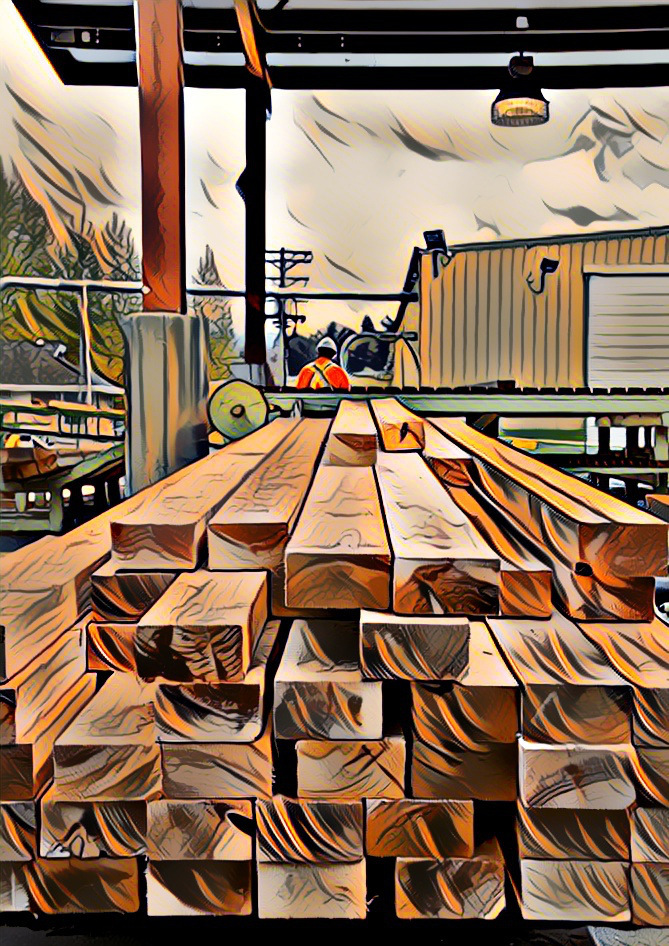 This study investigates the economic impact of sawmill entry and exits in Michigan between 2019 and 2023, a period marked by ongoing structural changes in the industry, including the closure of several large mills and the opening of smaller or mid-sized operations. Using observed employment changes… we applied an employment-based multiplier analysis to estimate how net sawmill job losses affected the statewide economy. The results show that while only 273 direct jobs were lost due to net changes from sawmill entry and exit during this period, the broader ripple effects were much larger, approximately 820 jobs and $211 million in output loss. These effects were most pronounced in labor-intensive sectors such as logging and transportation, as well as in downstream sectors like wholesale trade and real estate. The findings highlight the central role of sawmills in regional supply chains and states labor markets, with two-thirds of job losses occurring outside the mills themselves.
This study investigates the economic impact of sawmill entry and exits in Michigan between 2019 and 2023, a period marked by ongoing structural changes in the industry, including the closure of several large mills and the opening of smaller or mid-sized operations. Using observed employment changes… we applied an employment-based multiplier analysis to estimate how net sawmill job losses affected the statewide economy. The results show that while only 273 direct jobs were lost due to net changes from sawmill entry and exit during this period, the broader ripple effects were much larger, approximately 820 jobs and $211 million in output loss. These effects were most pronounced in labor-intensive sectors such as logging and transportation, as well as in downstream sectors like wholesale trade and real estate. The findings highlight the central role of sawmills in regional supply chains and states labor markets, with two-thirds of job losses occurring outside the mills themselves.
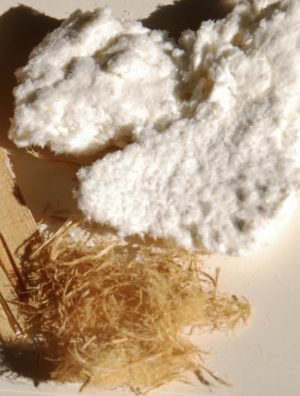 COQUITLAM, BC — Gregor Robertson, Minister of Housing and Infrastructure and Minister responsible for Pacific Economic Development Canada (PacifiCan), announced an investment of over $6.8 million for two Coquitlam-based businesses that are developing technologies to reduce waste and advance sustainability in the energy and textile sectors. …Novo Textile Company is receiving an investment of over $1.8 million to expand its textile recycling capacity. Novo plans to bind recycled fibres with BC wood pulp fibres to produce Canadian-made textiles at a competitive price. This will strengthen Canadian supply chains and divert 15 million pounds of garment waste from landfills annually. …Novo Textiles was incorporated in 1991 as a supplier of fibre-filled home textiles. Most recently, Novo introduced a textile recycling production line, continuing its evolution within the textile sector. It is estimated that 92 million tonnes of textile waste ends up in landfills annually.
COQUITLAM, BC — Gregor Robertson, Minister of Housing and Infrastructure and Minister responsible for Pacific Economic Development Canada (PacifiCan), announced an investment of over $6.8 million for two Coquitlam-based businesses that are developing technologies to reduce waste and advance sustainability in the energy and textile sectors. …Novo Textile Company is receiving an investment of over $1.8 million to expand its textile recycling capacity. Novo plans to bind recycled fibres with BC wood pulp fibres to produce Canadian-made textiles at a competitive price. This will strengthen Canadian supply chains and divert 15 million pounds of garment waste from landfills annually. …Novo Textiles was incorporated in 1991 as a supplier of fibre-filled home textiles. Most recently, Novo introduced a textile recycling production line, continuing its evolution within the textile sector. It is estimated that 92 million tonnes of textile waste ends up in landfills annually..jpg)
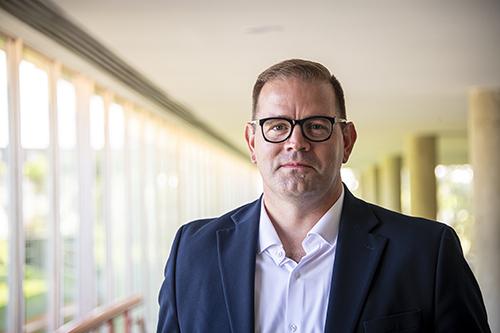

 When Millard Dority came out of retirement to oversee the expansion of Jesup Memorial Library, he had one goal: to prove that Maine could produce its own cross-laminated timber. Instead, he uncovered a glaring hole in the state’s forest economy. …But with no CLT factories in Maine, the wood had to be trucked from New England to Illinois for processing, then hauled back to Bar Harbor—a headache in a state blanketed by forests. …The Jesup Library expansion is one of just 27 CLT projects in Maine, using spruce-pine-fir and eastern hemlock from New England. Forestry expert Andy Fast said these underused species are finding new life through CLT, but warned, “Supply chain efficiencies will determine whether it’s a viable product longer term.” Despite interest, Maine has failed to land a CLT manufacturer. LignaTerra Global and SmartLam both announced plans in 2018, only to back out. [to access the full story a Bangor Daily News subscription is required].
When Millard Dority came out of retirement to oversee the expansion of Jesup Memorial Library, he had one goal: to prove that Maine could produce its own cross-laminated timber. Instead, he uncovered a glaring hole in the state’s forest economy. …But with no CLT factories in Maine, the wood had to be trucked from New England to Illinois for processing, then hauled back to Bar Harbor—a headache in a state blanketed by forests. …The Jesup Library expansion is one of just 27 CLT projects in Maine, using spruce-pine-fir and eastern hemlock from New England. Forestry expert Andy Fast said these underused species are finding new life through CLT, but warned, “Supply chain efficiencies will determine whether it’s a viable product longer term.” Despite interest, Maine has failed to land a CLT manufacturer. LignaTerra Global and SmartLam both announced plans in 2018, only to back out. [to access the full story a Bangor Daily News subscription is required].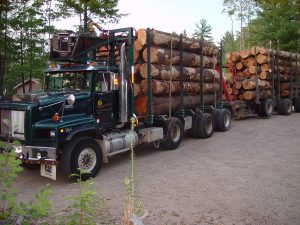 Canada’s forests are burning. …Smoke from these fires has degraded air quality across Canada and the US. The situation has led some US policymakers to publicly blame Canada for failing to manage wildfires and to demand more active forest management. These critiques are hypocritical, given their record of climate change denial. …Yet beyond partisan politics, the US continues to impose tariffs on Canadian lumber, undermining our capacity to invest in stronger forest management. …Eliminating or reducing US tariffs would instantly raise the value of Canada’s standing forest stock, sending a price signal that makes forestry activity viable in regions that are currently too remote or costly to harvest. At the margin, higher returns would unlock investment in better forest management, including areas that are now left untouched because they are uneconomic to service. …Lifting tariffs would be the first step, but it would not be a cure-all.
Canada’s forests are burning. …Smoke from these fires has degraded air quality across Canada and the US. The situation has led some US policymakers to publicly blame Canada for failing to manage wildfires and to demand more active forest management. These critiques are hypocritical, given their record of climate change denial. …Yet beyond partisan politics, the US continues to impose tariffs on Canadian lumber, undermining our capacity to invest in stronger forest management. …Eliminating or reducing US tariffs would instantly raise the value of Canada’s standing forest stock, sending a price signal that makes forestry activity viable in regions that are currently too remote or costly to harvest. At the margin, higher returns would unlock investment in better forest management, including areas that are now left untouched because they are uneconomic to service. …Lifting tariffs would be the first step, but it would not be a cure-all. 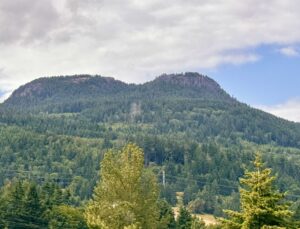 Harvesting in North Cowichan’s 5,000-hectare municipal forest reserve (MFR) is considered a primary issue for the rest of council’s term, which ends in October, 2026. On Aug. 20, council voted 4-3 to make harvesting, which hasn’t taken place since 2019, one of its strategic priorities. Coun. Bruce Findlay pointed out that the municipality has received no revenues from harvesting in the MFR for six years, and it may take several more years yet as negotiations with the Quw’utsun Nation on co-management of the MFR continue. …Despite the vote, CAO Ted Swabey advised council that he thinks that it’s unlikely that any harvesting could actually take place before the end of council’s term. …The public engagement aspect of the forest review concluded in early 2023, and the feedback from that process found very strong support for active conservation in the MFR, which would allow for targeted harvesting to provide some income, while restoring and enhancing biodiversity.
Harvesting in North Cowichan’s 5,000-hectare municipal forest reserve (MFR) is considered a primary issue for the rest of council’s term, which ends in October, 2026. On Aug. 20, council voted 4-3 to make harvesting, which hasn’t taken place since 2019, one of its strategic priorities. Coun. Bruce Findlay pointed out that the municipality has received no revenues from harvesting in the MFR for six years, and it may take several more years yet as negotiations with the Quw’utsun Nation on co-management of the MFR continue. …Despite the vote, CAO Ted Swabey advised council that he thinks that it’s unlikely that any harvesting could actually take place before the end of council’s term. …The public engagement aspect of the forest review concluded in early 2023, and the feedback from that process found very strong support for active conservation in the MFR, which would allow for targeted harvesting to provide some income, while restoring and enhancing biodiversity.

 The Forest Appeals Commission dismissed a Vanderhoof hunting and fishing lodge’s appeal of a $25,000 fine for cutting Crown timber without a licence. In an Aug. 13 decision, panel chair Maureen Baird upheld the March 2023 fine against Crystal Lake Resort Ltd. by the Ministry of Forests. Daniel Brooks, whose family bought the resort in 1975, admitted trees were cut without a licence in July 2020 on a right of way and the company asked, after the fact, for the Ministry of Forests to authorize the removal of merchantable timber. The ministry advised the company that it needed to have a licence to harvest in the first place. Brooks said he did not know he needed a licence. …The Ministry approved the required management plan, that allowed cutting trees if the resort had a forestry licence to do so.
The Forest Appeals Commission dismissed a Vanderhoof hunting and fishing lodge’s appeal of a $25,000 fine for cutting Crown timber without a licence. In an Aug. 13 decision, panel chair Maureen Baird upheld the March 2023 fine against Crystal Lake Resort Ltd. by the Ministry of Forests. Daniel Brooks, whose family bought the resort in 1975, admitted trees were cut without a licence in July 2020 on a right of way and the company asked, after the fact, for the Ministry of Forests to authorize the removal of merchantable timber. The ministry advised the company that it needed to have a licence to harvest in the first place. Brooks said he did not know he needed a licence. …The Ministry approved the required management plan, that allowed cutting trees if the resort had a forestry licence to do so.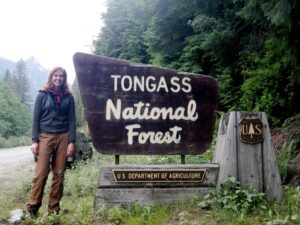 Ten members of the US House of Representatives’ Committee on Natural Resources are making an unusual visit to Alaska this week during a break from business on Capitol Hill. The 45-person committee deals with a variety of issues pertaining to public lands in the United States, and the visit is giving eight Republicans and two Democrats a chance to put their literal hands on the topics they cover. …Among the group was the committee’s chairman, Rep. Bruce Westerman, R-Arkansas, as well as the home-state Republican Rep. Nick Begich. Also attending were Reps. Harriet Hageman, R-Wyoming; Tom Tiffany, R-Wisconsin; Pete Stauber, R-Minnesota; Rob Wittman, R-Virginia; Val Hoyle, D-Oregon; Paul Gosar, R-Arizona; and Sarah Elfreth, D-Maryland. …Several of the Republican lawmakers said they believe there is room to increase logging in the Tongass in order to meet the demand for lumber to build housing, particularly locally.
Ten members of the US House of Representatives’ Committee on Natural Resources are making an unusual visit to Alaska this week during a break from business on Capitol Hill. The 45-person committee deals with a variety of issues pertaining to public lands in the United States, and the visit is giving eight Republicans and two Democrats a chance to put their literal hands on the topics they cover. …Among the group was the committee’s chairman, Rep. Bruce Westerman, R-Arkansas, as well as the home-state Republican Rep. Nick Begich. Also attending were Reps. Harriet Hageman, R-Wyoming; Tom Tiffany, R-Wisconsin; Pete Stauber, R-Minnesota; Rob Wittman, R-Virginia; Val Hoyle, D-Oregon; Paul Gosar, R-Arizona; and Sarah Elfreth, D-Maryland. …Several of the Republican lawmakers said they believe there is room to increase logging in the Tongass in order to meet the demand for lumber to build housing, particularly locally.
 Oregon’s forestry sector, once the state’s driving industry, has scaled back dramatically, the result of modernization and reduced harvests since the 1990s. Yet the industry is still adding workers and looking to replace retirees — now with a growing demand for technical expertise. The industry’s employers say they’re struggling to fill the jobs they have. Retirements have thinned the ranks, turnover is high and new workers are hard to recruit. Adding to the trouble, a workforce study found the sector will add 3,400 jobs annually through 2030. In particular, the report found Oregon’s colleges and universities aren’t producing enough forestry graduates to meet demand — suggesting Oregon employers might have to recruit from elsewhere to staff some of the highest-paying jobs in a signature sector. It’s a counterintuitive finding for an industry that’s been cutting further in recent months through the closures of mills and factories. Officials say that’s because there’s more to forestry work than logging.
Oregon’s forestry sector, once the state’s driving industry, has scaled back dramatically, the result of modernization and reduced harvests since the 1990s. Yet the industry is still adding workers and looking to replace retirees — now with a growing demand for technical expertise. The industry’s employers say they’re struggling to fill the jobs they have. Retirements have thinned the ranks, turnover is high and new workers are hard to recruit. Adding to the trouble, a workforce study found the sector will add 3,400 jobs annually through 2030. In particular, the report found Oregon’s colleges and universities aren’t producing enough forestry graduates to meet demand — suggesting Oregon employers might have to recruit from elsewhere to staff some of the highest-paying jobs in a signature sector. It’s a counterintuitive finding for an industry that’s been cutting further in recent months through the closures of mills and factories. Officials say that’s because there’s more to forestry work than logging.
